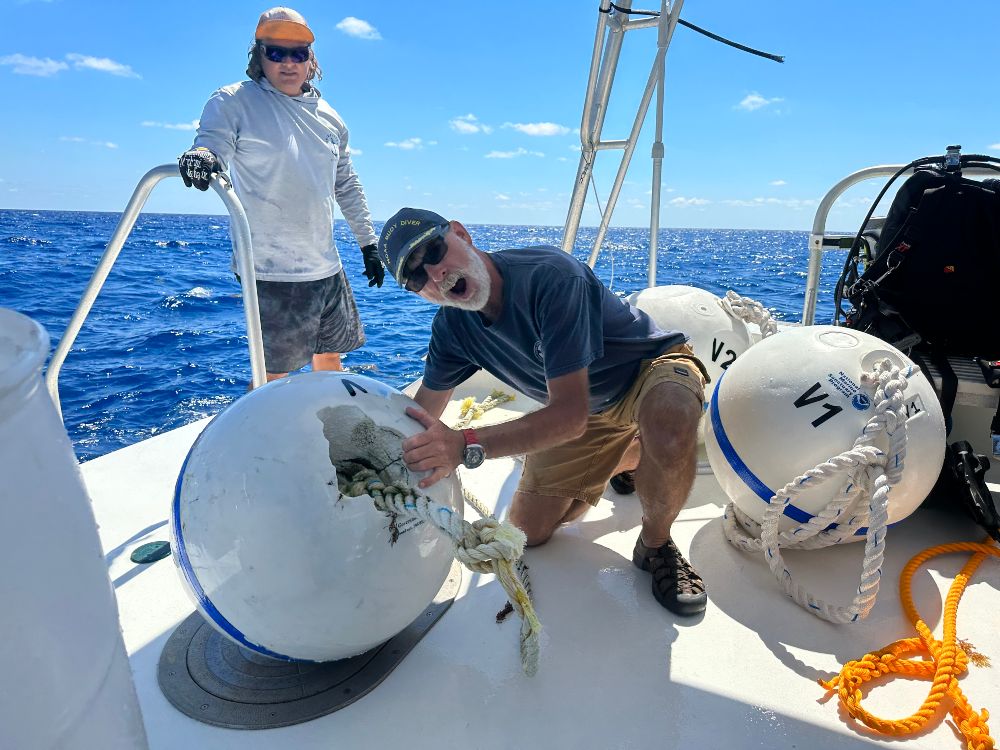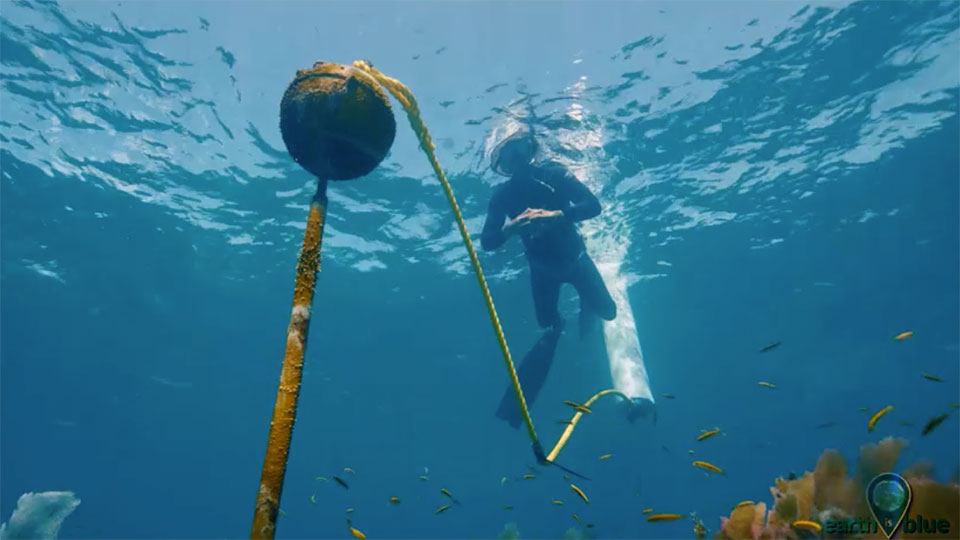How to Use a Mooring Buoy

Correct use of a buoy will prevent unnecessary wear and tear on the mooring system, as well as protect your vessel and the vessels of others. There is no fee to use the reef mooring buoys maintained by the sanctuary, but keep in mind there are mooring buoys in anchorages throughout the Keys that do charge a fee.
Florida Keys National Marine Sanctuary assumes no liability for use of the buoys.
Maintaining the Mooring Buoy System
Regular maintenance is necessary to keep the mooring buoys in good working condition. The mooring buoy team conducts bi-annual and annual maintenance inspections for each buoy.

Bi-annual Inspections
- Inspect all buoys and pick up lines
- Clean pickup lines of growth or replace as needed
- Clean buoys and check for cracks; replace as needed
- Inspect and clean exposed portions of the buoy through-line and replace as needed
Annual Inspections
Complete all tasks required during bi-annual maintenance, as well as:
- Inspect down line and protective housing for wear and damage; replace as needed
- Inspect down line and protective housing for wear and damage; replace as needed
- Inspect anchor for wear or damage; replace as needed
If you would like to help with the maintenance of the mooring buoys, visit our volunteer page.
Florida Keys Mooring Buoy Team


